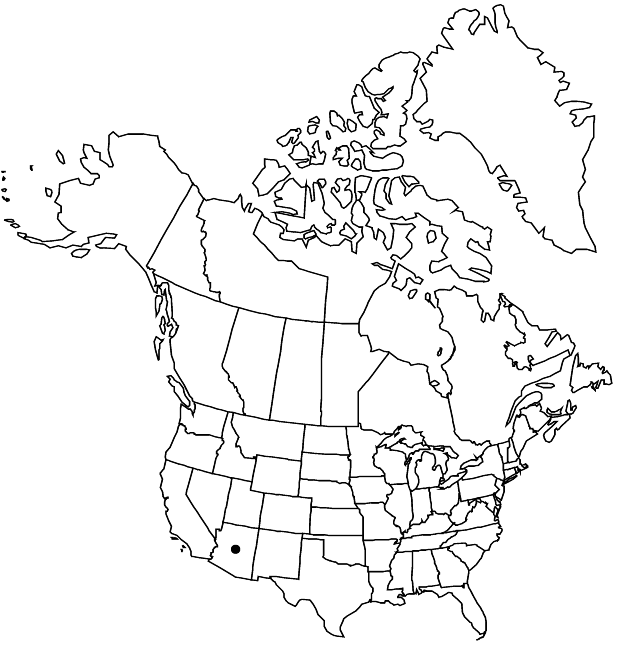familyCrassulaceae
genusDudleya
subgenusDudleya subg. Dudleya
speciesDudleya saxosa
subspeciesDudleya saxosa subsp. collomiae
Difference between revisions of "Dudleya saxosa subsp. collomiae"
Madroño 14: 108. 1957,.
Basionym: Dudleya collomiae Rose Desert Pl. Life 6: 68. 1934 (as collomae)
Synonyms: Echeveria collomiae (Rose) Kearney & Peebles
FNA>Volume Importer |
FNA>Volume Importer |
||
| Line 6: | Line 6: | ||
|place=14: 108. 1957, | |place=14: 108. 1957, | ||
}} | }} | ||
| − | |basionyms={{Treatment/ID/ | + | |basionyms={{Treatment/ID/Basionym |
|name=Dudleya collomiae | |name=Dudleya collomiae | ||
|authority=Rose | |authority=Rose | ||
| + | |publication_title=Desert Pl. Life | ||
| + | |publication_place=6: 68. 1934 (as collomae) | ||
}} | }} | ||
|synonyms={{Treatment/ID/Synonym | |synonyms={{Treatment/ID/Synonym | ||
| Line 28: | Line 30: | ||
|elevation=400-1800 m | |elevation=400-1800 m | ||
|distribution=Ariz. | |distribution=Ariz. | ||
| − | |discussion=<p>The well-isolated polyploid <i></i>subsp.<i> collomiae</i> is similar to the diploid <i></i>subsp.<i> aloides</i>, differing mainly in its larger flowers.</p> | + | |discussion=<p>The well-isolated polyploid <i></i></i>subsp.<i><i> collomiae</i> is similar to the diploid <i></i></i>subsp.<i><i> aloides</i>, differing mainly in its larger flowers.</p> |
|tables= | |tables= | ||
|references= | |references= | ||
| Line 52: | Line 54: | ||
|publication year= | |publication year= | ||
|special status= | |special status= | ||
| − | |source xml=https://jpend@bitbucket.org/aafc-mbb/fna-data-curation.git/src/ | + | |source xml=https://jpend@bitbucket.org/aafc-mbb/fna-data-curation.git/src/f6b125a955440c0872999024f038d74684f65921/coarse_grained_fna_xml/V8/V8_378.xml |
|genus=Dudleya | |genus=Dudleya | ||
|subgenus=Dudleya subg. Dudleya | |subgenus=Dudleya subg. Dudleya | ||
Revision as of 20:28, 24 September 2019
Caudices 1.5–3 cm diam. Leaf blades 5–15 × 1–2.5 cm, 2–6 mm thick. Inflorescences: floral shoots red, 5–12-leaved, 15–40 × 0.3–0.6 cm; cincinni 4–15-flowered, 3–12 cm. Pedicels 5–20 mm. Flowers: sepals 4–7 mm; petals bright yellow, red-tinged, 12–16(–20) mm. 2n = 136.
Phenology: Flowering spring.
Habitat: Rock crevices and rocky slopes
Elevation: 400-1800 m
Discussion
The well-isolated polyploid subsp. collomiae is similar to the diploid subsp. aloides, differing mainly in its larger flowers.
Selected References
None.
Lower Taxa
None.
